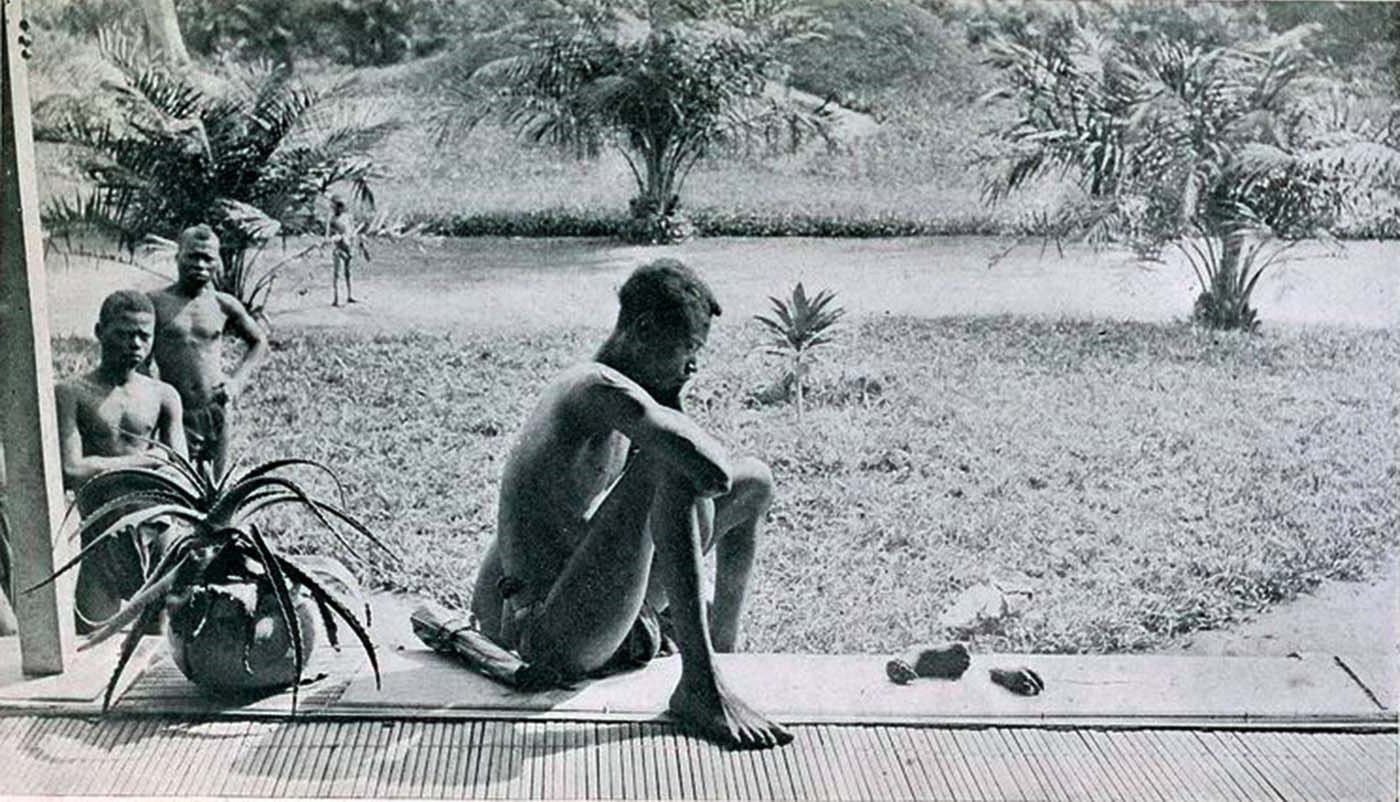Négritude
The Status Quo before Négritude: Results of the Scramble for Africa.

as punishment for not meeting his quota of goods in the Belgian colony of the Congo in 1904.

taken by a German officer in German South West Africa (modern-day Namibia) in 1906.
Négritude
Négritude was both a literary and ideological movement, led by French-speaking black writers and intellectuals. The movement is marked by several important ideas:

Company and owner of the British South Africa
Company, which carved out Rhodesia for itself.
He wanted to "paint the map [British] red."

"It's the most horrible thing I have ever seen in my life .
The natives are five thousand years back of us.
The British have been there for two hundred years;
for every dollar that the British have put into Gambia,
they have taken out ten.
It’s just plain exploitation of those people."

"Ubuntu is the essence of being a person.
It means that we are people through other people.
We cannot be fully human alone.
We are made for interdependence."
Bishop Desmond Tutu.

an abundant supply of the poor"
— Voltaire
Les Trois Pères
The three founders/fathers of Negritude (les trois pères), Aimé Césaire, Léopold Sédar Senghor, and Léon-Gontran Damas, met while studying in Paris in 1931 and began to publish the first journal devoted to Negritude, L’Étudiant noir (The Black Student), in 1934.
 Leopold Sendar Senghor First president of independent Senegal |
 Aime Cesaire Poet, playwright, & politician from Martinique |
 Léon-Gontran Damas French Guyanese poet & National Assembly member |
The Audacious Term
The term "Négritude" was coined by Césaire in his Cahier d’un retour au pays natal (Notebook of a Return to the Native Land, 1939) and it means, in his words, "the simple recognition of the fact that one is black, the acceptance of this fact and of our destiny as blacks, of our history and culture."
Césaire's first work is notable for its disavowal of assimilation as a valid strategy for resistance and for its reclamation of the word "nègre" as a positive term. "Nègre" previously had been almost exclusively used in a pejorative sense. Césaire deliberately and proudly incorporated this derogatory word into the name of the movement.
Scope
Even in its beginnings Négritude was truly an international movement. It drew inspiration from the flowering of African-American culture brought about by the writers and thinkers of the Harlem Renaissance while asserting its place in the canon of French literature. It privileged the traditions of the African continent, and attracted participants in the colonized countries of the Caribbean, North Africa, and Latin America.
Sympathizers and Critics
The movement’s sympathizers included French philosopher Jean-Paul Sartre and Jacques Roumain, the founder of the Haitian Communist party. The movement would later find a major critic in Wole Soyinka, the Nigerian playwright, poet, and Nobel Laureate, who believed that a deliberate and outspoken pride in their color placed black people continually on the defensive, saying notably,
"Un tigre ne proclâme pas sa tigritude, il saute sur sa proie," or "A tiger doesn’t proclaim its tigerness; it jumps on its prey."
Négritude remained an influential movement throughout the rest of the 20th century, and is one of the driving forces behind things like the Mau Mau uprising in Kenya, and the Black Arts and Black Power Movements in the US.